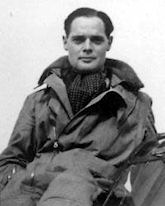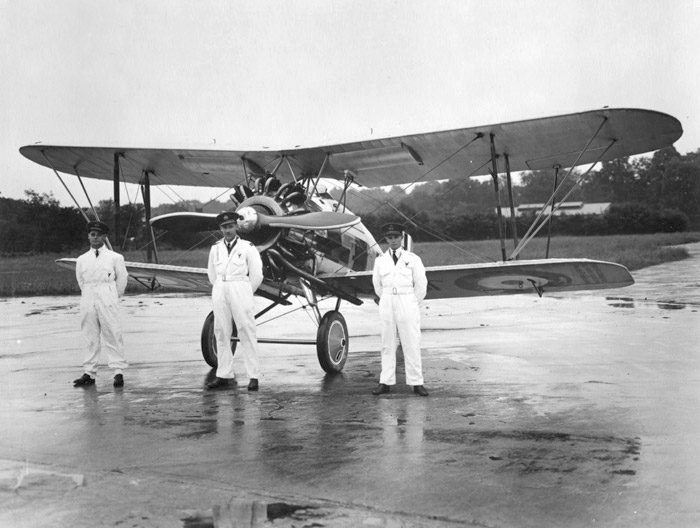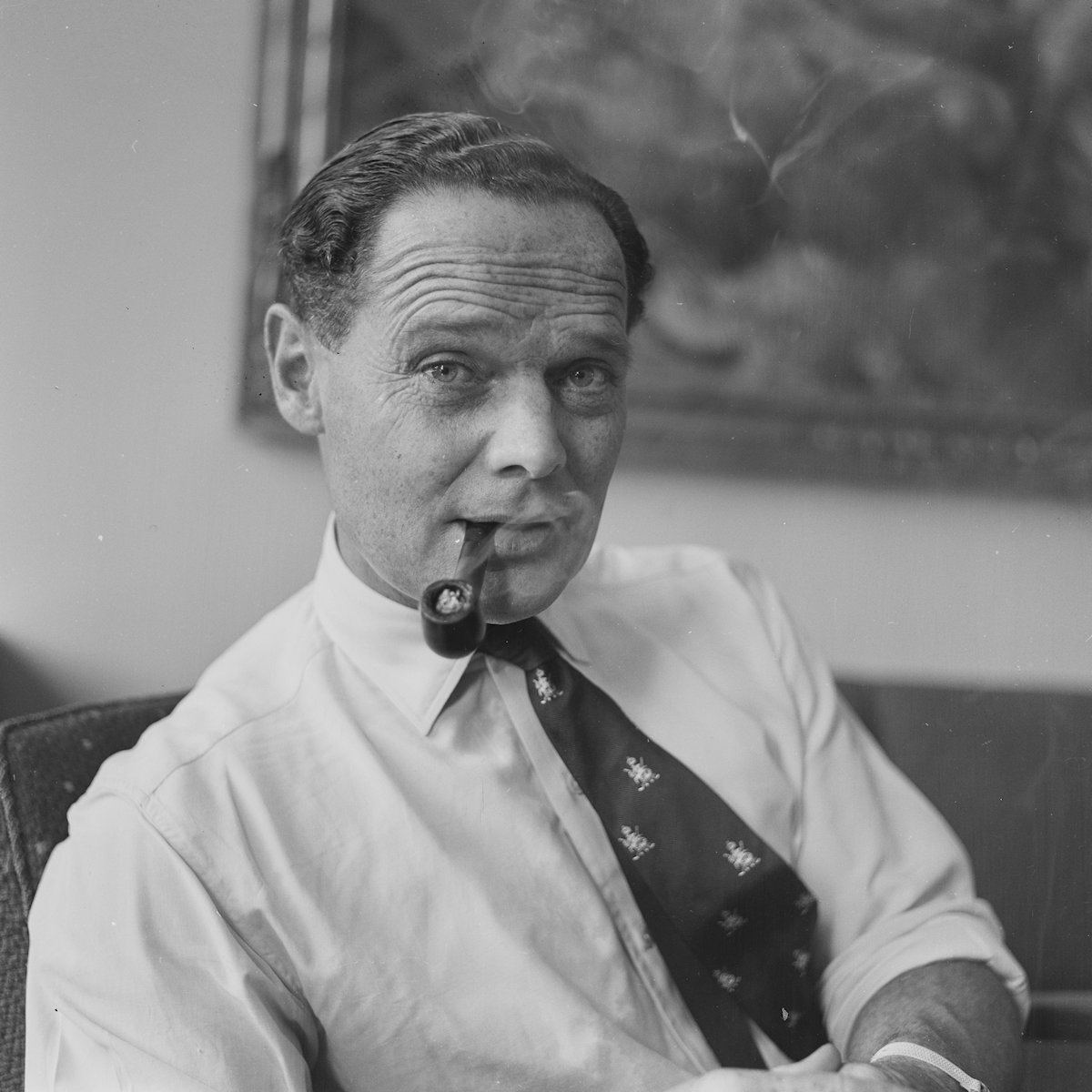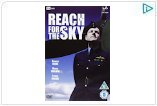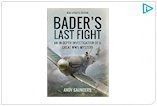Between February and May 1940 Bader practised formation flying, air tactics, and undertook flights over sea convoys. Bader found opposition to his ideas about aerial combat, he favoured using the sun and altitude to ambush the enemy but the RAF did not share his opinions. Official orders dictated that pilots should fly line-astern and attack singly. Despite this being at odds with his preferred tactics, Bader obeyed orders and his skill saw him rapidly promoted to section leader.
Leigh-Mallory promoted Bader to Flight Commander of 222 Squadron, based at Duxford, with the rank of Flight Lieutenant. During the evacuation of Dunkirk the RAF were ordered to provide Air Cover during Operation Dynamo and whilst patrolling the coast on the 1st June 1940, he came across a Messerschmitt Bf 109 in front of him and shot him down.
After Dunkirk, Bader was posted to 242 Squadron based at RAF Coltishall as Squadron Leader on 28th June 1940. The Squadron was mainly made up of Canadians who had retreated hastily from France after high casualties. Bader transformed the Squadron into an effective fighting unit and gained the respect of the pilots through his strong leadership. 242 Squadron was then assigned to 12 Group and became fully operational on the 9th of July 1940.
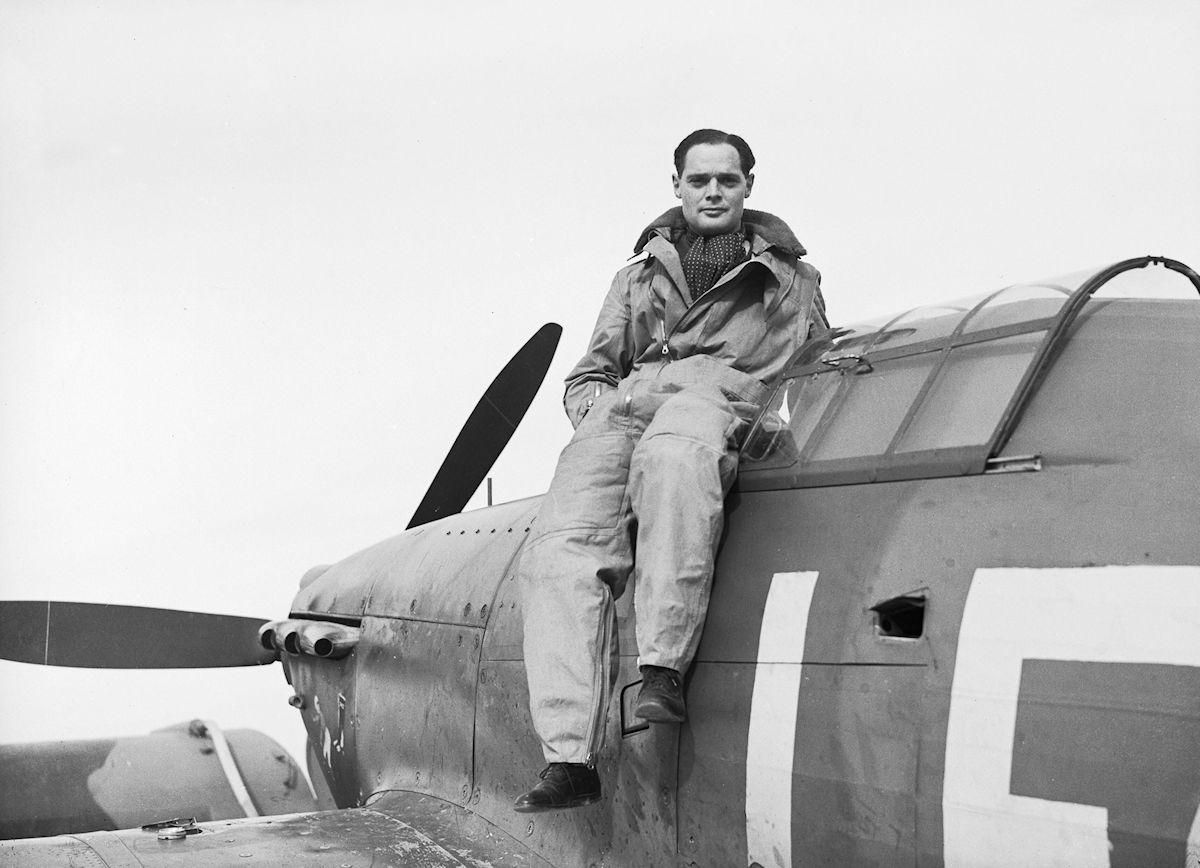 |
|
| Squadron Leader Douglas Bader, CO 242 Squadron RAF, Duxford September 1940 |
On the 11th July 1940, Bader scored his first kill with his new Squadron by shooting down a Dornier Do 17 whilst on lone patrol flying North of the Norfolk coast. Bader shot down another Dornier on the 21st August with the enemy aircraft crashing into the sea off Great Yarmouth. Later in August, Bader shot down 2 Messerschmitt Bf 110's and on the 30th August 1940 242 Squadron was moved back to Duxford.
On the 30th August, Bader shot down 2 Messerschmitt Bf 110's and on the 7th September he repeated the feat but his Hurricane had been badly damaged in the combat by a Messerschmitt Bf 109 and he almost decided to bail out but he managed to regain control and land.
On 7 September, Bader claimed two Messerschmitt Bf 109s shot down followed by a Junkers Ju 88. On the 9th September, Bader claimed another Dornier and during the same mission he attacked a Heinkel He 111 only to discover he was out of ammunition. Enraged, he thought about ramming it and succeeded in slicing off the rudder with his propeller, but broke off the attack when he regained his composure, the Heinkel He 111 continued onward badly damaged. On the 14th September 1940, Bader was awarded the Distinguished Service Order (DSO) for his combat leadership.
On 15 September 1940, known as 'Battle of Britain Day', Bader damaged a Dornier Do 17 and a Junkers Ju 88 while destroying another Dornier Do 17 in the afternoon. Bader flew several missions that day, which involved heavy air combat. The original combat report states that he destroyed one enemy aircraft, claimed no probable, but did claim several damaged. Another Dornier Do 17 and a Junkers Ju 88 were claimed on 18th September and a Messerschmitt Bf 109 on the 27th of September.
On 12 December 1940, Bader was awarded the Distinguished Flying Cross (DFC) for his service during the Battle of Britain with his unit, 242 Squadron, claiming 62 aerial victories.
On 18 March 1941, Bader was promoted to Wing Commander becoming one of the first 'Wing Leaders'. Stationed at Tangmere he had 145, 610 and 616 Squadrons under his command and Bader led his wing of Spitfires on sweeps over north-western Europe throughout the summer campaign. These were missions combining bombers and fighters designed to lure out and tie down German Luftwaffe fighter units that might otherwise serve on the Russian front. One of the Wing Leader's "perks" was permission to have his initials marked on his aircraft as personal identification, thus "D-B" was painted on the side of Bader's Spitfire, giving rise to his radio call-sign "Dogsbody".
During 1941 his Wing was re-equipped with Spitfire Vb's, which had two Hispano 20 mm cannon and four .303 machine guns. Bader flew a Mk Va equipped with eight .303 machine guns, as he insisted that these guns were more effective against fighter opposition. His tactics required a close-in approach in which he felt the lower calibre weapons had a more devastating effect. At the time, RAF trials with wing-mounted cannons had also revealed a number of shortcomings that precluded a widespread acceptance of the armament.
On the 7th of May 1941 Bader shot down one Messerschmitt Bf 109 and claimed another as a probable victory. On the 21st of June 1941, Bader shot down a Messerschmitt Bf 109E off the coast of Deservres. His victory was witnessed by two other pilots who saw the Bf 109 crash and the German pilot bale out. On the 25th of June 1941, Bader shot down two more Messerschmitt Bf 109Fs and in the same action he shared in the destruction of another Messerschmitt Bf 109F.
On the 2nd of July 1941, Bader was awarded the Bar to his DSO and later that day he claimed one Messerschmitt Bf 109 destroyed and another damaged. On the 4th of July, Bader fired on a Messerschmitt Bf 109E which slowed down so much that he nearly collided with it, the Bf 109 "fell away in a sloppy fashion", "as though the pilot had been hit" - it was claimed as a probable. On the 6th of July another Messerschmitt Bf 109 was shot down with the pilot bailing out, this kill was witnessed by Pilot Officers Johnson and Smith.
On the 10th of July, Bader claimed a Messerschmitt Bf 109 over Bethune and later, Bader destroyed a Messerschmitt Bf 109E which blew up south of Calais. On the 12th of July, Bader found further success shooting down one Messerschmitt Bf 109 and damaging three others between Bethune and St Omer. On the 23rd of July, Bader claimed another Messerschmitt Bf 109 damaged and possibly destroyed.
On 9 August 1941, Bader was flying his Spitfire Mk Va serial W3185 "D-B" on an offensive patrol looking for Messerschmitt Bf 109's from Abbeville or Wissant. Just after Bader's section of four aircraft crossed the coast, a formation of Messerschmitt Bf 109s was spotted flying in formation below them and travelling in the same direction. Bader dived on them too fast and barely avoided colliding with one of them, after levelling out at 24,000ft he found that he was now separated from his section and that three pairs of Messerschmitt Bf 109s were a couple of miles in front of him. He dropped down below them and closed up before destroying one of them with a short burst of fire from close range and was just opening fire on a second Messerschmitt Bf 109 when he noticed two on his left turning towards him so at this point he decided to return home. However, making the mistake of banking away from them, Bader believed he had a mid-air collision with the second of the two Messerschmitt Bf 109s.

